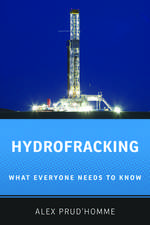Mechanics of Swelling: From Clays to Living Cells and Tissues: Nato ASI Subseries H:, cartea 64
Editat de Theodoros K. Karalisen Limba Engleză Paperback – 15 dec 2011
Din seria Nato ASI Subseries H:
- 18%
 Preț: 953.82 lei
Preț: 953.82 lei -
 Preț: 393.13 lei
Preț: 393.13 lei - 15%
 Preț: 643.34 lei
Preț: 643.34 lei - 15%
 Preț: 643.34 lei
Preț: 643.34 lei - 15%
 Preț: 641.03 lei
Preț: 641.03 lei - 15%
 Preț: 642.83 lei
Preț: 642.83 lei - 15%
 Preț: 642.51 lei
Preț: 642.51 lei - 5%
 Preț: 712.81 lei
Preț: 712.81 lei -
 Preț: 392.97 lei
Preț: 392.97 lei - 15%
 Preț: 651.02 lei
Preț: 651.02 lei - 15%
 Preț: 640.24 lei
Preț: 640.24 lei - 18%
 Preț: 948.61 lei
Preț: 948.61 lei - 15%
 Preț: 655.92 lei
Preț: 655.92 lei - 15%
 Preț: 655.92 lei
Preț: 655.92 lei - 15%
 Preț: 653.14 lei
Preț: 653.14 lei - 15%
 Preț: 650.19 lei
Preț: 650.19 lei - 15%
 Preț: 655.13 lei
Preț: 655.13 lei - 15%
 Preț: 652.17 lei
Preț: 652.17 lei - 15%
 Preț: 675.58 lei
Preț: 675.58 lei - 18%
 Preț: 958.07 lei
Preț: 958.07 lei - 18%
 Preț: 961.41 lei
Preț: 961.41 lei - 18%
 Preț: 970.56 lei
Preț: 970.56 lei - 5%
 Preț: 1100.30 lei
Preț: 1100.30 lei - 5%
 Preț: 376.43 lei
Preț: 376.43 lei - 15%
 Preț: 650.86 lei
Preț: 650.86 lei - 15%
 Preț: 644.63 lei
Preț: 644.63 lei - 15%
 Preț: 655.60 lei
Preț: 655.60 lei - 18%
 Preț: 963.47 lei
Preț: 963.47 lei - 15%
 Preț: 648.42 lei
Preț: 648.42 lei - 5%
 Preț: 731.43 lei
Preț: 731.43 lei - 15%
 Preț: 653.14 lei
Preț: 653.14 lei - 18%
 Preț: 960.13 lei
Preț: 960.13 lei - 18%
 Preț: 968.34 lei
Preț: 968.34 lei - 18%
 Preț: 953.97 lei
Preț: 953.97 lei - 15%
 Preț: 654.95 lei
Preț: 654.95 lei - 15%
 Preț: 652.49 lei
Preț: 652.49 lei - 15%
 Preț: 650.86 lei
Preț: 650.86 lei - 5%
 Preț: 367.64 lei
Preț: 367.64 lei - 5%
 Preț: 1104.68 lei
Preț: 1104.68 lei - 18%
 Preț: 953.20 lei
Preț: 953.20 lei - 15%
 Preț: 651.99 lei
Preț: 651.99 lei - 15%
 Preț: 647.27 lei
Preț: 647.27 lei - 15%
 Preț: 653.00 lei
Preț: 653.00 lei - 15%
 Preț: 656.25 lei
Preț: 656.25 lei - 18%
 Preț: 962.35 lei
Preț: 962.35 lei - 15%
 Preț: 644.82 lei
Preț: 644.82 lei - 15%
 Preț: 666.55 lei
Preț: 666.55 lei - 15%
 Preț: 642.68 lei
Preț: 642.68 lei - 15%
 Preț: 645.96 lei
Preț: 645.96 lei - 15%
 Preț: 651.84 lei
Preț: 651.84 lei
Preț: 671.14 lei
Preț vechi: 789.58 lei
-15% Nou
Puncte Express: 1007
Preț estimativ în valută:
128.42€ • 134.44$ • 106.26£
128.42€ • 134.44$ • 106.26£
Carte tipărită la comandă
Livrare economică 05-19 aprilie
Preluare comenzi: 021 569.72.76
Specificații
ISBN-13: 9783642846212
ISBN-10: 3642846211
Pagini: 812
Ilustrații: XXII, 781 p.
Dimensiuni: 170 x 242 x 43 mm
Greutate: 1.27 kg
Ediția:Softcover reprint of the original 1st ed. 1992
Editura: Springer Berlin, Heidelberg
Colecția Springer
Seria Nato ASI Subseries H:
Locul publicării:Berlin, Heidelberg, Germany
ISBN-10: 3642846211
Pagini: 812
Ilustrații: XXII, 781 p.
Dimensiuni: 170 x 242 x 43 mm
Greutate: 1.27 kg
Ediția:Softcover reprint of the original 1st ed. 1992
Editura: Springer Berlin, Heidelberg
Colecția Springer
Seria Nato ASI Subseries H:
Locul publicării:Berlin, Heidelberg, Germany
Public țintă
ResearchCuprins
1. Swelling in Soils.- Flow and volume change in soils and other porous media, and in tissues.- Water movement and volume change in swelling systems.- Thermodynamics of soils swelling non-hydrostatically.- Operational aspects of the mechanics of deforming porous media: theory and application to expansive soils.- The osmotic role in the behaviour of swelling clay soils.- 2. Plant Growth.- Osmotic adjustment in plant cells exposed to drought and temperature stress: can a cause and effect hypothesis be formulated and tested?.- On the kinematics and dynamics of plant growth.- Regeneration in the root apex: Modelling study by means of the growth tensor.- Daily variations of stem and branch diameter:Short overview from a developed example.- Physical principles of membrane damage due to dehydration and freezing.- Ion channels in the plasma membrane of plant cells.- The effect of low oxygen concentration and azide on the water relations of wheat and maize roots.- The expansion of plant tissues.- 3. Cells Morphology, Function and Deformation.- MDCK cells under severely hyposmotic conditions.- Osmotic swelling-pressurization-rupture of isolated cells and disjoining of cell aggregates in soft tissues.- Endocrine pituitary cell cultures: cellular morphology, protein secretion, and susceptibility to weak bases and ionophores.- Cytoskeletal networks and osmotic pressure in relation to cell structure and motility.- Control of water permeability by divalent cations.- Mitochondrial volume homeostasis: Regulation of Cation transport systems.- Mechanisms involved in the control of mitochondrial volume and their role in the regulation of mitochondrial function.- The deformation of a spherical cell sheet: A mechanical model of sea-urchin gastrulation.- Epithelial cell volume regulation.- Interactions between liver cell volume and liver cell function.- From glycogen metabolism to cell swelling.- Cell spreading and intracellular pH in mammalian cells.- 4. Function and Deformation of Tissues.- The role of tissue swelling in modelling of microvascular exchange.- Interstitial fluid pressure in control of interstitial fluid volume during normal conditions, injury and inflammation.- Swelling pressure of cartilage: roles played by proteoglycans and Collagen.- Changes in cartilage osmotic pressure in response to loads and their effects on chondrocyte metabolism.- Interstitial macromolecules and the swelling pressure of loose connective tissue.- A mixture approach to the mechanics of the human intervertebral disc.- Blood-tissue fluid exchange-transport through deformable, swellable porous systems.- Rheology of connective tissues as swelling fibrous structures.- The influence of boundary layer effects on atherogenesis in dialysis treatment patients.- 5. Blisters, Forces Between Particles, Phase Transitions of Gels and Flow in Deformable Media.- Blisters.- Origin of short-range forces in water between clay surfaces and lipid bilayers.- Swelling from the perspective of molecular assemblies and single functioning biomolecules.- Attractive double layer interaction: From calcium clays to biological membranes.- Hydration and steric interactions between lipid membranes.- Polymer gel phase transition: the molecular mechanism of product release in mucin secretion?.- Phase transitions of Gels.- Power Generation by Macromolecular Porous Gels.- Swelling and consolidation of a muscle-like hydrogel.- Dynamics of osmotic fluid flow.- Mechanism of osmotic flow.- 6. Developments in Various Techniques.- Cell protrusion formation by external force.- Author and Subject Index.












